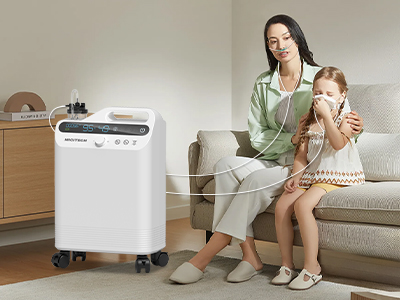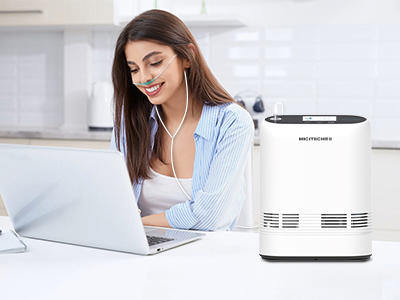23 Jun 2025
For many new parents, the hum of an oxygen machine becomes a lullaby. It’s a sound that signifies life-sustaining support for tiny lungs still finding their rhythm. But every parent grappling with this reality eventually arrives at the pivotal question: “When will my baby outgrow oxygen?” It’s a query that doesn’t come with a convenient calendar or a one-size-fits-all answer, because every tiny chest has its own timeline. Yet, understanding the terrain can illuminate the path ahead.

The Role of Oxygen in a Baby’s Development
Oxygen therapy is like a diligent coach for the lungs, guiding premature or medically fragile infants as they grow. At birth, some infants — especially preemies — have underdeveloped pulmonary structures that struggle to draw in enough air. In other cases, illnesses such as Respiratory Distress Syndrome (RDS), Bronchopulmonary Dysplasia (BPD), or congenital heart disease necessitate supplemental oxygen.
Although it can be daunting for new parents, this therapy serves as a catalyst for growth, allowing tiny alveoli to mature and the respiratory system to gain strength. The goal is always the same: to support the infant until their lungs can stand tall and breathe effectively on their own.
The Factors Influencing a Baby’s Timeline
Why do some infants shed their oxygen tubing within weeks, while others need it for months — or longer? It’s a delicate interplay of biology, medical history, and developmental milestones:
Gestational Age at Birth: The earlier a baby arrives, the more time their lungs need to catch up. Preemies often have less surfactant, making breathing a workout akin to lifting weights after one too many doughnuts.
Underlying Medical Conditions: Chronic lung disease, heart anomalies, or pulmonary hypertension can extend the timeline. In such cases, oxygen therapy can evolve from a temporary necessity to a long-term reality.
Weight and Growth Patterns: Adequate nutrition and weight gain can help bolster the respiratory system. Sometimes the “magic number” for weaning off oxygen coincides with reaching certain developmental weight milestones.
Response to Medical Interventions: Medications like diuretics or steroids can aid in lung recovery, potentially hastening the point at which oxygen therapy can be discontinued.
The Weaning Process: A Gradual Dance, Not an Abrupt Exit
Weaning a baby off oxygen therapy is akin to a slow waltz rather than a lightning-fast sprint. Medical teams typically reduce oxygen flow incrementally, monitoring how well the infant maintains stable oxygen saturations (often between 90–95%) throughout the day and night.
Tests like overnight pulse oximetry studies or room air trials help determine readiness. In many instances, the first step is removing supplemental oxygen for short periods, gradually extending until it’s no longer needed. The goal is to foster resilience and strength, allowing the infant’s respiratory and cardiovascular systems to adapt seamlessly.
Signs Your Baby Might Be Ready
Each tiny patient is a universe unto themselves, but certain indicators reliably hint that the oxygen tether can be clipped:
Consistently Strong Oxygen Saturation: The ability to maintain healthy oxygen levels (without supplemental support) across activity, feeding, and sleep.
Feeding and Growing Without Fatigue: An infant that can nurse or bottle-feed vigorously and gain weight reliably is demonstrating robust respiratory endurance.
Lack of Respiratory Distress: Reduced episodes of retractions, grunting, or flaring nostrils can point to an evolving ability to breathe effectively.
Regular Developmental Milestones: Improved alertness, activity, and developmental milestones often accompany respiratory recovery.

The Role of Medical Oversight and Monitoring
As tempting as it might be to remove the oxygen tubing in a fit of parental jubilation, medical oversight is paramount. Pediatric pulmonologists and neonatologists utilize a host of tools — pulse oximeters, sleep studies, and clinical observations — to assess readiness.
Trusting this process ensures that when your baby finally graduates from oxygen therapy, it’s a victory won with precision and care. The reward? Peace of mind, and a tiny nose freed from its tether.
Life After Oxygen: What to Expect
The moment the tubing disappears doesn’t necessarily mark the end of medical vigilance, especially for premature infants. Routine follow-ups, growth and developmental assessments, and the occasional respiratory evaluation often continue for the first year or two.
Yet life after oxygen therapy is as hopeful as it is liberating. It means more “normal” moments — a car ride without equipment logistics, a tummy-time unimpeded by tubing, and those first carefree giggles that rise and fill a room.
Keywords: oxygen
Originally published 23 Jun 2025, updated 23 Jun 2025.